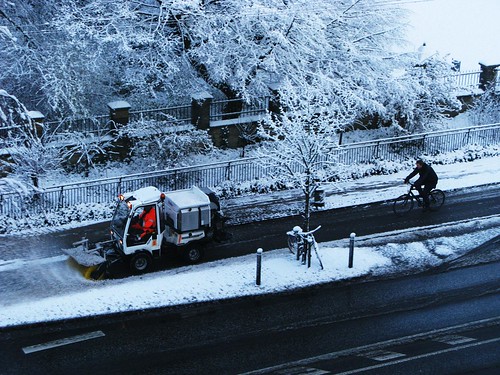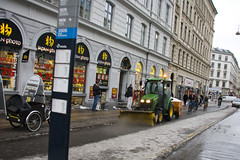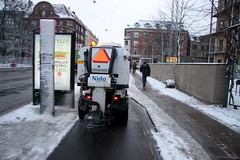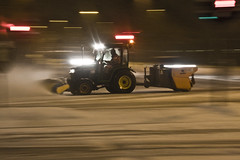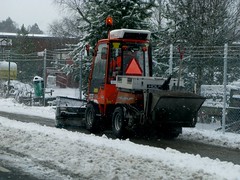
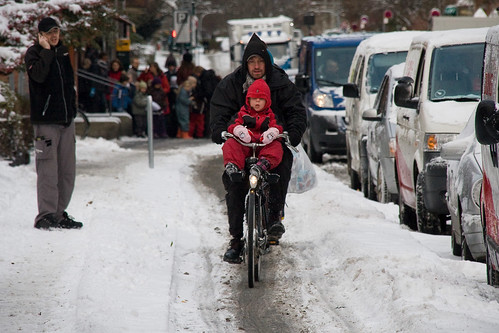 The amount of snow that fell during the Climate Conference ranged between 10 cm and 50 cm in a day. Most of the bike lanes along the main streets were cleared pre-emptively of snow but less busy streets had to wait a day or so for snowploughing. The reason was not just the amount of snow, but also the fact that Copenhagen’s resources were apparently stretched to the limit during the climate conference so the usual level of service was delayed. Nevertheless, Copenhageners just slowed down and took it easy until freer passage was available on bike lanes like the one above.It’s snowing again as I write this and we’re back to normal. The bike lanes are cleared and salted while snow lies on either side.
The amount of snow that fell during the Climate Conference ranged between 10 cm and 50 cm in a day. Most of the bike lanes along the main streets were cleared pre-emptively of snow but less busy streets had to wait a day or so for snowploughing. The reason was not just the amount of snow, but also the fact that Copenhagen’s resources were apparently stretched to the limit during the climate conference so the usual level of service was delayed. Nevertheless, Copenhageners just slowed down and took it easy until freer passage was available on bike lanes like the one above.It’s snowing again as I write this and we’re back to normal. The bike lanes are cleared and salted while snow lies on either side.
Even in smaller towns in Denmark and, in the photo above, Sweden, bike lanes are cleared regularly. Our summer house is near Höör, Sweden, a town of about 7000 people, and here they clear the bike lanes with ploughs to allow the people free passage on two wheels.
